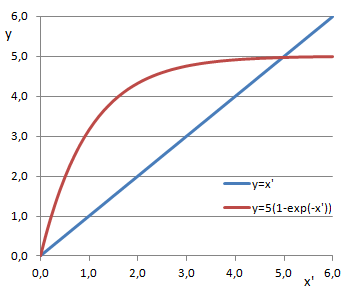Supplément 2.4: Loi de déplacement de Wien
Représentation de la longueur d'onde
La distribution de la densité spectrale d'énergie du champ de rayonnement d'un corps noir est :
La longueur d'onde au maximum de la courbe de rayonnement de Planck sur la température peut être calculée à partir de sa dérivée en l'égalisant avec zéro (problème de l'extrema). Pour une vue d'ensemble claire, nous fixons
Avec la nouvelle variable, la loi de radiation devient :
A l'aide de la règle du quotient, la dérivée sera :
En égalisant avec zéro et en réduisant, on peut trouver une équation transcendante pour l'extremum :
Comme la plupart des équations transcendantes et contrairement aux équations algébriques, elle ne peut être résolue de manière exacte, mais seulement de manière approximative.
On trouve :
Avec , et il suit la loi de déplacement de Wien :
Représentation des fréquences
Dans ce cas, il n'est pas non plus possible de déduire le maximum u maximum de la représentation de la longueur d'onde à gauche avec la relation . Les graphiques des courbes de Planck dans les représentations en longueur d'onde et en fréquence montrent que leurs maxima de ne correspondent pas.
Le calcul doit donc, dans ce cas également, émaner de la loi de rayonnement de Planck sous la forme d'une représentation de la fréquence. Le processus de calcul est comparable à celui illustré dans la colonne de gauche. Les équations correspondantes sont données ci-dessous par souci d'exhaustivité.
La densité spectrale d'énergie du corps noir en fonction de la fréquence est :
La loi de rayonnement avec la nouvelle variable :
Différenciation par rapport à la fréquence :
L'équation transcendante pour le calcul de l'extremum
avec la solution .
La loi de déplacement de Wien devient donc :

